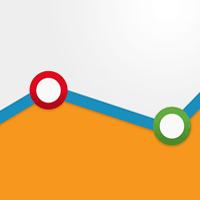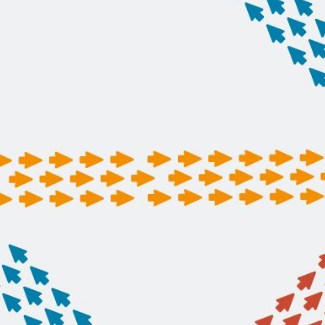How to Build a Customer Retention Strategy

It has been repeated and proven time and again that the majority of a company's revenue comes from a small percentage of its existing consumers and that it costs more to acquire a new customer than it does to sell to a current one, yet businesses seem to be none the wiser about retention strategies.
Given the fact that today's customers are tech-savvy, less tolerant of poor customer service and more specific in their requirements, however, keeping them loyal is difficult. They are well-aware of their importance for your business, and they want you to treat them accordingly. If you don't do so, they will leave you for your competitors.
To prevent this, you need to establish yourself as an authority in your niche, earn your target audience's trust and nurture stronger relationships with them. Of course, none of this would be possible without having a solid customer retention strategy.
Here is how to build one.
Know who your Loyal Customers Are
In today's ever-changing entrepreneurial ecosystem, to stay relevant, you need to keep up with the latest shifts and trends in your niche, as well as the changes in your consumers' purchasing habits. But, to forecast all potential issues and be able to resolve them before they become a serious problem, you first need to know who your customers are.
This is exactly where target audience segmentation steps in. When doing your research, you need to take numerous metrics into consideration, from demographic information (age, gender, location and income) to education and occupation. Only this way will you be able to understand your customers' buying behavior and deliver a personalized approach.
Introduce a Customer Loyalty Program
Loyalty programs gained momentum as one of the simplest and yet most effective customer retention techniques. However, these initiatives go far beyond incentivizing your customers for loyalty. For instance, you can reward them for hitting a particular benchmark, sending you a feedback, making referrals, or sharing your posts via social media.
From free merchandise to coupons, there are numerous creative ways to say thanks to your customers for helping you grow your company. One such example is the Starbucks' "My Starbucks Program," based on a point system. Namely, their consumers can earn stars with every purchase made and, in this way, get free drinks on their birthdays or order coffee via the mobile app. The most loyal consumers can also get a Gold card, which gives them the opportunity to get free drinks and food. However, this loyalty program is much more than that. It helps people feel special, inspiring them to stay loyal to the brand.
Build your Brand Affinity
By building brand affinity from the very beginning, you will be able to build stronger customer relationships and protect your brand from the potential churn. According to Liquid Brand Agency, you need to start with the fundamental goal of creating a brand that speaks to your customer. From there, they also point out brands need to:
- Stay connected. Communicate with your consumers constantly, be it via emails, blog posts or social networking channels. It's critical to keep in touch with them and provide them with fresh content to help them understand your brand's value.
- Offer a high level of customer service. People are willing to pay more for a product if they had a positive experience with the brand in the past. This means being available 24/7 and delivering outstanding shopping experience, warranties on products, simple refunds and competitive prices. Always ask your customers for feedback on how their buying experience can be made better and do your best to exceed their expectations.
- Build a wide community around your brand mission to your consumers engaged and committed to your brand.
- Be natural. It doesn't matter if you're communicating with your customers over the phone or via social networks, you should talk to them as if they were your friends. This will make your brand more approachable and create a firmer bond between your brand and your customers.
Gamify your Marketing Efforts
Traditionally, the use of game mechanics was synonymous with video games, but the times have changed, and so has this trend. Today, gamification is one of the most significant customer engagement boosters. By adding a sense of emergency and competition, this technique encourages your consumers to complete their actions. For example, you could use timers or leaderboards to show your loyal shoppers where they stand compared to others.
One of the companies that proved that gamification is not a toy is Autodesk, an industry leader in 3-D design, engineering and entertainment software. They found that their trial users were more likely to buy the full package if they used their 30-day free software trial at least three times. To get more users to test the free software, they gamified their in-trial marketing and rewarded the users with the highest rankings on a leaderboard. And, the results were jaw-dropping- there was a 54 percent boost in trial usage over the lifetime of the campaign.
Keep Track of the Metrics that Matter
Collecting, analyzing and summarizing data is may not be your cup of tea, but they play a fundamental role in determining how well your customer retention strategy performs. Your website attracts a lot of traffic and you may convert a pretty impressive number of your visits into paying customers for the first time. To inspire them to convert again, you need to keep track of certain metrics and make data-driven decisions based on the results you get.
- Customer retention rate shows how many customers stick around during a given period.
- Customer churn rate is a number of customers that have stopped buying from you.
- Repeat purchase probability is a likelihood of a customer making another purchase.
- Repeat purchase rate is a percentage of consumers who've made more than one purchase from you.
- Customer lifetime value tells how much revenue the average customer brings to you.
To Wrap it Up
Customer retention is the nerve center of your company's growth. Even though the tips listed above will help you fortify your relationships with your customers and boost your bottom line, you need to know that there is no one-size-fits-all customer retention strategy. You need to take both your client base and your business needs into consideration, tailoring your efforts in accordance with them.
About the Author
Dan Radak is a marketing professional with eleven years of experience. He is currently working with a number of companies in the field of digital marketing, closely collaborating with a couple of ecommerce companies. He is also a coauthor on several technology websites and regular contributor to Technivorz.










